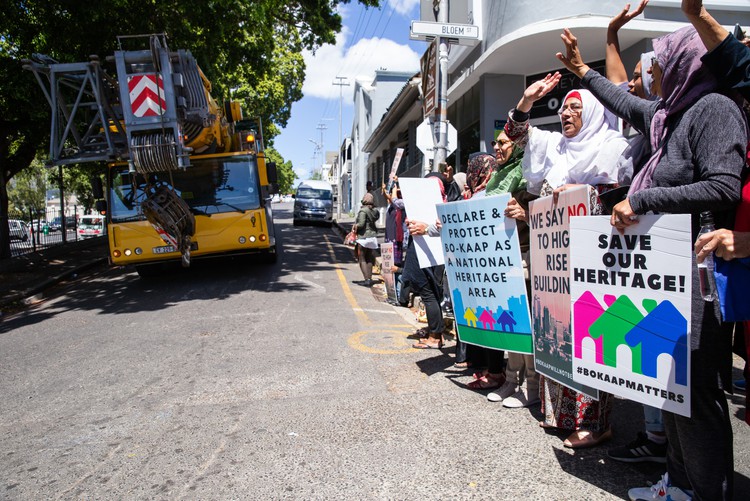Bo-Kaap residents claim victory as construction crane leaves
Charges dropped against the four protesters arrested in earlier protest
Protesters cheered on Wednesday as a construction crane, which they had unsuccessfully tried to block from the area yesterday, left the Bo-Kaap.
About 50 protesters gathered in Bo-Kaap for the second day in a row to protest against the construction of a 12-storey apartment building and the gentrification of their area.
As the crane left the historic suburb, residents prayed, cheered and cried, claiming a small victory for the protest.
On Tuesday protesters had tried to block the crane from entering Bo-Kaap in order to halt the development of a 12-storey apartment block. The apartments are being built by BLOK Urban Developers. Police used riot shields and stun grenades to disperse protesters, arresting four. Today the charges were dropped, according to their lawyer Igshaan Huggins.
GroundUp’s attempts to get comment on Wednesday from Colin Wardle, BLOK spokesperson, were unsuccessful.
Jacky Poking, an activist and Bo-Kaap resident, said that “today we feel victorious and emotional”. But, she said, “We are not fooled. We know they are going to be back”.
Poking said residents would protest again if the crane returned. She compared big developers in Bo-Kaap to a romantic relationship that did not work. “They come into Bo-Kaap. They love Bo-Kaap. They want to be here, and then they want to change it. They want to change it to suit their needs. They have no interest in respecting the traditions and cultures,” she said.
Noor Osman of the Bo-Kaap Civic Association said that they were elated that the crane left. “Land Invasion is not going to happen. We will continue to send that message out very clearly to developers.”
A construction vehicle carrying bricks and cement was also blocked from entering on Wednesday. The protesters dispersed shortly after the crane left.
The conflict in Bo Kaap is complex. We suggest reading the following articles:
Support independent journalism
Donate using Payfast

© 2018 GroundUp.
This article is licensed under a Creative Commons Attribution-NoDerivatives 4.0 International License.
You may republish this article, so long as you credit the authors and GroundUp, and do not change the text. Please include a link back to the original article.

